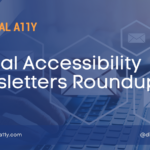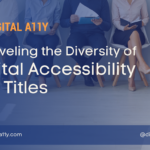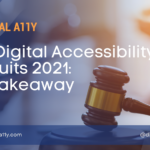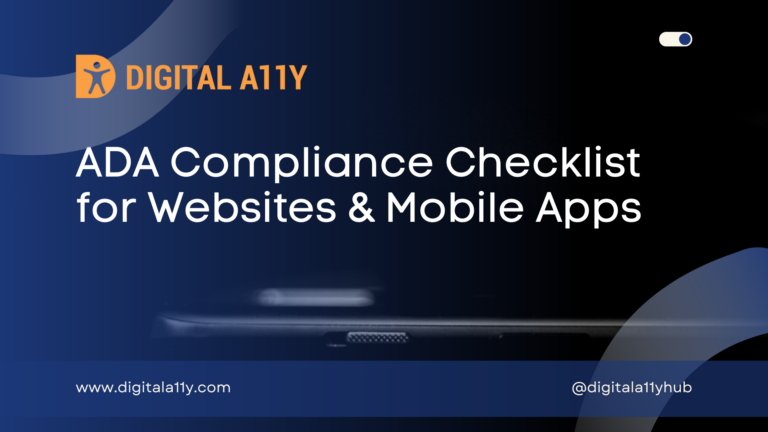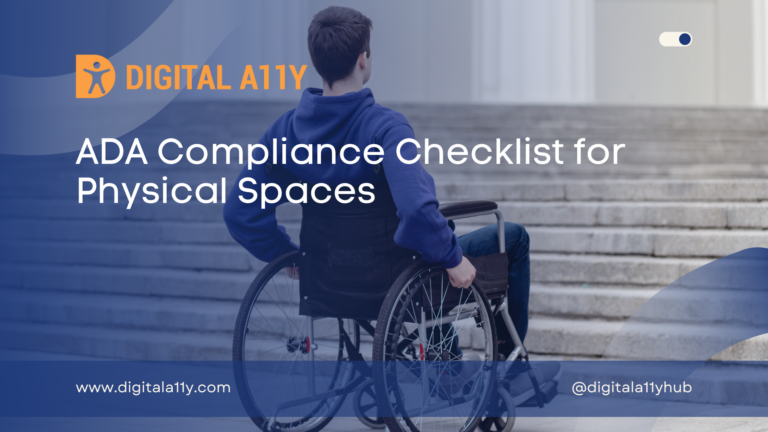India’s Digital Accessibility Laws and Overview
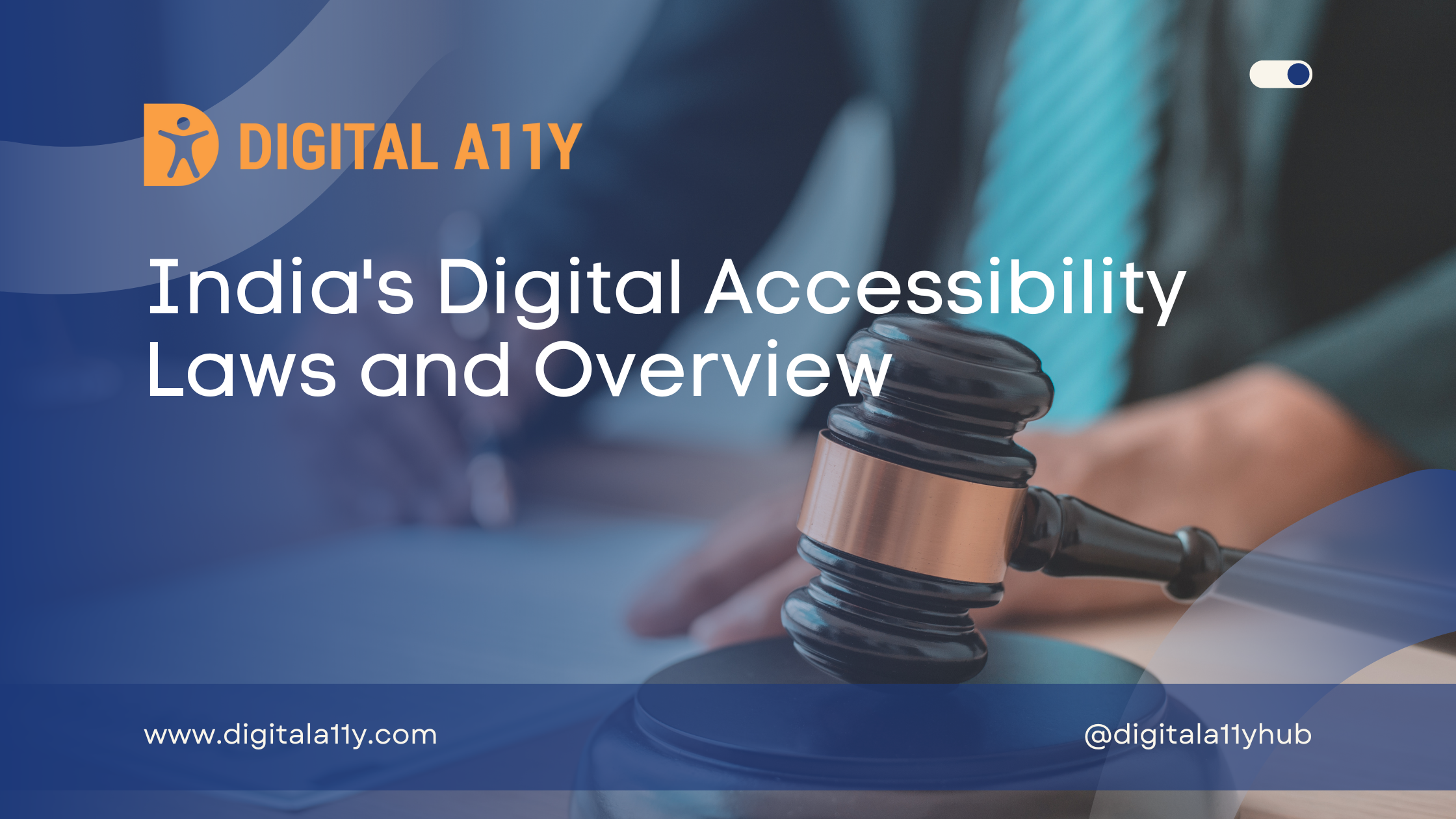
India is one of the fastest growing and emerging markets for innovating, building, and nurturing digital technology. Many organizations hire computer engineers and designers and set up offices in India due to the availability of great talent at a lower cost.
Like many countries, India has a substantial population of people with disabilities. According to the 2011 Census, over 26.8 million individuals—approximately 2.21% of the total population—were recorded as living with some form of disability. Disability rights organizations and advocacy groups in India have long championed the cause of inclusion, playing a key role in shaping critical laws and accessibility standards that aim to protect and empower this diverse community.
In this article, we will provide an overview of Indian accessibility laws and standards, along with essential guidance to achieve accessibility compliance. Like most countries around the world, India has laws and standards requiring both public and private companies to ensure accessibility. Their websites, mobile applications, documents, and more must comply with the Web Content Accessibility Guidelines (WCAG).
Rights of Persons with Disabilities Act, 2016 (RPWD 2016)
In 2016, the Rights of Persons with Disabilities Act, commonly known as the RPWD Act 2016, was passed in Parliament. It replaced the previous Persons with Disabilities Act of 1995 and expanded the scope of protections for individuals with disabilities. One of the key advancements was the inclusion of clear guidance on digital accessibility, particularly for private organizations, and the requirements for providing reasonable accommodations to persons with disabilities.
Some of the key provisions of the RPWD Act include:
- Increased Disability Categories: The act expanded the list of recognized disabilities from 7 to 21, which include conditions like autism, intellectual disabilities, mental illness, and specific learning disabilities, ensuring a broader scope of protection.
- Non-Discrimination in Employment: The act mandates that employers must not discriminate against persons with disabilities in matters of employment, including recruitment, promotion, and working conditions. Employers must provide reasonable accommodations to ensure accessibility in the workplace.
- Mandatory Accessibility: The RPWD Act requires that all public and private establishments make their services accessible to persons with disabilities. This includes making digital content—such as websites, mobile applications, and digital documents—accessible by following accepted standards like the Web Content Accessibility Guidelines (WCAG).
- Reasonable Accommodation: The act emphasizes that service providers and employers must provide reasonable accommodations to persons with disabilities. This includes assistive technologies, accessible formats, and any necessary modifications to ensure access to digital services and resources.
- Grievance Redressal Mechanism: The act mandates the establishment of a grievance redressal mechanism within organizations for addressing complaints related to accessibility and discrimination faced by individuals with disabilities.
- Legal Obligations and Penalties
The RPWD Act includes penalties for non-compliance. Organizations that fail to provide accessibility or discriminate against persons with disabilities can face legal consequences, including fines. - Alignment with International Standards
The RPWD Act aligns India’s disability law with the UN Convention on the Rights of Persons with Disabilities (UNCRPD), which India ratified in 2007. This shows India’s commitment to global human rights standards.
The compliance deadline for these provisions was set for June 15th, 2019. However, due to insufficient awareness and publicity, many organizations were unaware of this requirement and the timeline set by the RPWD Act.
While the RPWD Act provided guidance on the need for accessibility, it did not explicitly mandate which technical standards should be used for compliance. As a result, many organizations defaulted to the globally recognized Web Content Accessibility Guidelines (WCAG) to measure and implement digital accessibility.
In summary, the RPWD Act 2016 is a comprehensive piece of legislation aimed at improving the lives of persons with disabilities in India by ensuring their full participation in society, including access to the digital world. For organizations, it is crucial to understand their obligations under the act and ensure they are providing inclusive and accessible services.
Guidelines for Indian Government Websites and Apps (GIGW)
The Guidelines for Indian Government Websites and Apps (GIGW) were first drafted in 2009 with the aim of making government digital platforms Usable, User-Centric, and Universally Accessible—a principle known as the “UUU trilogy.” These guidelines cover the entire lifecycle of a website or application, from conceptualization and design to development, maintenance, and management.
The GIGW framework has evolved significantly over time through several key versions:
- GIGW 1.0 (2009):
Developed by the National Informatics Centre (NIC), this initial version was adopted into the Central Secretariat Manual of Office Procedure by the Department of Administrative Reforms and Public Grievances (DARPG). It established baseline norms for usability and structure. - GIGW 2.0 (2019):
This version expanded the guidelines to cover mobile applications and aligned many of its principles with W3C standards, especially in the area of accessibility and performance. - GIGW 3.0 (2025 – latest):
The most recent update, GIGW 3.0, introduces enhanced UI/UX guidance, integrated cybersecurity protocols (in collaboration with CERT-In), and centralized dashboards for continuous compliance monitoring and governance.
Key Features
GIGW offers detailed technical guidance on:
- Semantic HTML and page structure
- CSS usage and interface design
- Web implementation best practices
While GIGW does not explicitly mandate adherence to the Web Content Accessibility Guidelines (WCAG), much of its technical direction aligns closely with WCAG principles, ensuring better accessibility for users, including persons with disabilities.
- Mandatory for Government Websites: Emphasize that the GIGW guidelines are mandatory for all government websites in India, ensuring accessibility and usability for a broad range of users, including persons with disabilities. This ensures government services are accessible to all citizens.
- Compliance Check: The guidelines come with a detailed checklist for compliance, which government departments are required to follow. Regular audits are also conducted to ensure adherence to these standards.
- Focus on Accessibility for Persons with Disabilities: Although GIGW does not explicitly refer to WCAG, it focuses on ensuring that websites are accessible to people with disabilities by promoting practices such as providing alternative text for images, ensuring keyboard navigability, and designing for screen readers.
- Mobile Accessibility: In recent updates to GIGW, mobile accessibility has also been included, ensuring that government websites and applications are usable on smartphones and tablets, which are often the primary means of internet access in India.
- Multi-Language Support: GIGW promotes the inclusion of multiple language options, reflecting the linguistic diversity of India, making it easier for non-English speaking users to access government services.
- Security and Privacy Considerations: GIGW also includes provisions to ensure secure and private access to online services, adding an additional layer of trust in government websites and applications.
- Alignment with International Best Practices: Even though GIGW is tailored for Indian government websites, it draws from international best practices for web accessibility, including usability, performance, and design principles.
- Continuous Updates: Mention that GIGW is a living document that is periodically updated to keep pace with technological advancements and changing user needs, particularly in the area of digital accessibility.
Information Technology – Accessibility for the ICT Products and Services
In a significant move toward inclusive digital governance, India has introduced IS 17802, a legally enforceable standard that mandates accessibility in Information and Communication Technology (ICT) products and services. Developed by the Bureau of Indian Standards (BIS), this standard sets clear expectations for both public and private sector organizations to ensure that digital systems are usable by persons with disabilities.
Legal Status and Background
IS 17802 was officially adopted in 2023 and is now enforceable under the Rights of Persons with Disabilities (Amendment) Rules, 2023. It marks a pivotal shift from previous voluntary guidelines to a statutory requirement for digital accessibility compliance across a wide range of platforms and services.
The standard aligns with internationally recognized frameworks such as the Web Content Accessibility Guidelines (WCAG) and reflects India’s commitment to equitable access under the UN Convention on the Rights of Persons with Disabilities (UNCRPD).
IS 17802 applies to a broad spectrum of ICT products and services, including:
- Websites and web applications
- Mobile applications
- Digital documents and media
- Software systems and platforms
- Hardware interfaces such as kiosks, ATMs, and self-service terminals
It comprises two parts:
- Part 1: Requirements – Specifies detailed accessibility expectations
- Part 2: Determination of Conformance – Defines the procedures for evaluation and certification
The standard provides additional guidance on mobile accessibility, assistive technology support, and compliance across various device types.
Compliance and Implementation
Compliance with IS 17802 is now a legal requirement, and organizations that fail to meet its mandates may face:
- Legal consequences under the RPWD Act, 2016
- Disqualification from government contracts and tenders
- Increased vulnerability to public complaints and reputational damage
So, What Does All This Mean for You?
Whether you’re a startup, a university, a hospital, or a government agency—this affects you. And more importantly, this empowers you. Because accessible design doesn’t just benefit people with disabilities—it makes things easier and better for everyone.
An accessible website is faster, clearer, and easier to use. It ranks better on search engines. It reaches a bigger audience. And it tells your users that you care.
Final Thoughts: Inclusion Is Not Optional
India’s digital accessibility laws—RPWD Act, GIGW, and IS 17802—aren’t just boxes to tick. They are tools to build a fairer society. They ensure everyone can participate in the digital age.
So let’s not look at accessibility as a burden or an afterthought. Let’s see it as an opportunity. An opportunity to lead with empathy, innovate with purpose, and include with pride.
Because when we build for everyone, we build something truly powerful.
Related Reads
- Rights of Persons with Disabilities Act, 2016 on DEPwD Website
- Guidelines for Indian Government Websites and Apps (GIGW)
- IS 17802 – Accessibility for ICT Products and Services on BIS Portal.
- Digital Accessibility India (DAI)
